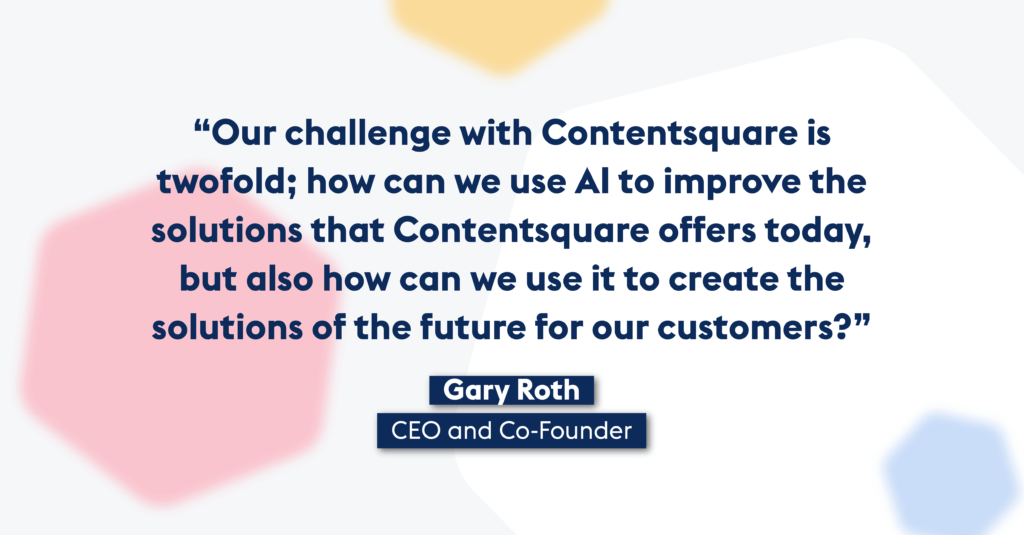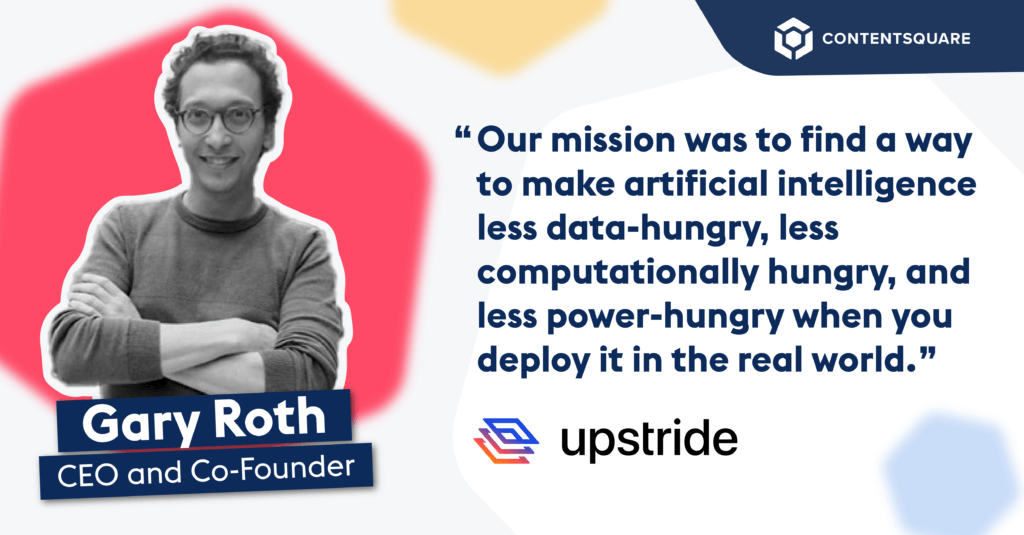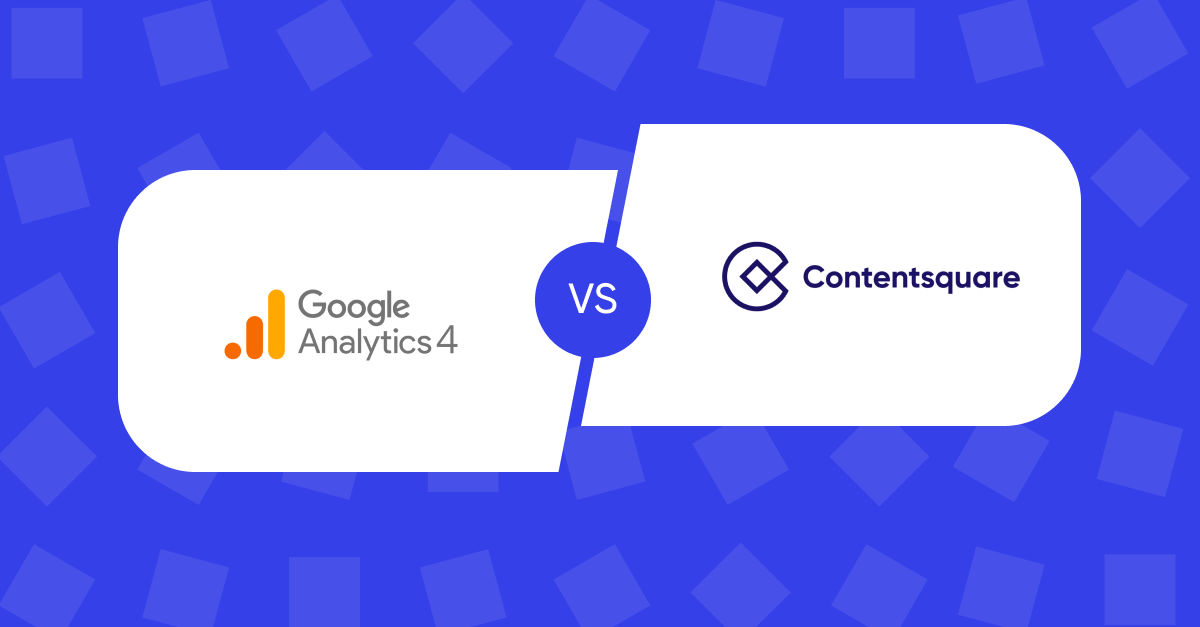Upstride: The journey to Contentsquare and beyond

The best place to begin Upstride’s journey is to take a step back and look at the most common problems that were facing the AI industry back in 2016 (when Upstride was born).
While many companies were keen to build artificial intelligence systems, there were three huge challenges that often derailed any significant advancements and prevented these companies from releasing AI-powered solutions that would perform well in the real world. Gary explains what the main three challenges were.
1. Access to data
“Artificial intelligence is often far too data-hungry,” says Gary. “If you want to teach a computer to recognize that a cat is a cat, or that a dog is a dog, you need millions – and in some cases, billions – of pictures.” However, most companies didn’t have the time, skills, or resources to collect, clean, and label such vast amounts of pictures.
2. An exponential increase in the need for computing power (…and associated costs!)
AI is also far too computationally hungry. “If you want to train your AI model,” Gary continues, “You need access to vast amounts of computing power.” And in a world where computational power increases by two to three times every five years, the amount of computing power required by artificial intelligence to perform well increases by 25,000 times in the same time frame.
“So if you look at the latest and greatest AI models from the likes of Google, OpenAI, and Facebook,” says Gary, “One single training can cost anywhere between $100,000 to $1,000,000. So if you want to have top-notch artificial intelligence, you need to have a lot of computing resources…and you need to have deep pockets!”
3. Sufficient battery power
Thirdly, when AI models are trained and ready to be used in cars, cameras, drones, or phones, they’re extremely power-hungry. “If I tell you that you can have a phone that is 100 times smarter, but that your battery life will only last for 10 minutes – I’m not sure you’d be extremely happy about it!” laughs Gary.
And so Upstride was born.
Interrogating the norm
For the past decade, the entire AI industry aligned on a computing paradigm that had never been challenged: the use of linear algebra everywhere – “the underlying mathematics used everywhere by everyone to build and deploy AI. The Upstride idea was to change that,” recalls Gary.
The idea of rethinking classical computation came to Upstride’s CTO and Co-Founder Dr. Wilder Lopes after having experienced first-hand the limitations of both deep learning algorithms and current hardware. “Our core belief was that computers were not designed to sustain the rapid growth of computation necessary to scale AI,” explains Gary.
So what if they could move away from linear algebra and try other types of mathematics instead? Could it bring more data or power efficiency to the neural networks?
Our goal was born; to launch a company that could solve the common problems around data and power efficiency.
Early stages of growth
With the idea taking root, it was time to raise some money, assemble a team, and find clients.
They began by proving the potential of their innovative AI technology on “toy” problems as Gary puts it. “I mean the really small stuff. But once we proved the value of our technology on small things, we were able to convince our investors that if they gave us one euro, we could build something that had the potential to change the world,” Gary says.
And with financial backing, they began building a team with experts from France, Poland, Russia, Portugal, Croatia, Italy, India, Bangladesh, Cameroon, and Brazil. “We brought brains from around the world to Paris to work with us, and for three years we researched like mad.”
During this time, Upstride worked with huge brands such as BMW, using AI technology to help automate the detection of defects on their car production lines. And then came Contentsquare.
Enticed by a wealth of customer data
“When we met Jon [Cherki], we were amazed by the amount of data that Contentsquare had and the billions of data points you could process on a daily basis.” recalls Gary. “But on top of that, Contentsquare were able and willing to become AI leaders over the next ten years too, which was an amazing playground for us!”
You had the data, you had the willingness, you had the resources – so why would we say no?

Leveraging AI for positive change
There are many use cases for using AI to create outstanding user experiences and drive product innovation at Contentsquare. Here, Gary mentions four possibilities:
- In-depth understanding of consumer intent: Leverage data to create micro clusters and understand what consumers want to do and which experience would be the best for them
- Recommendation systems: Push the most relevant products and content based on consumer behavior, such as personalized search results, product recommendations, and social media feeds.
- Product feedback analysis: Leverage AI to understand why clients like or dislike products, such as sentiment analysis of customer feedback, insights to improve products and services, the impact of feedback on conversion rates.
- Experience analysis feedback: Leverage AI to understand why users get frustrated online, such as review analysis and the impact of reviews on conversion rates.
And these are just a few examples of how Contentsquare and Upstride can work together to improve the customer experience with data-driven insights and services.
Looking towards the future
So where does Gary see the biggest opportunities for AI? “In creating hyper-personalized and relevant experiences,” he says.
While some brands are using rudimentary AI-based personalization already – showing male or female categories on the homepage depending on the user, for example – Gary knows AI has the potential to be far more powerful than that.
“I’m way more than just a man! I do sports two to three times a week and I have a budget, so brands should be pushing me to buy expensive stuff based on the exact sports I’m interested in, showing me things I really need.”
It blows my mind that when people visit a website, they’ll see the exact same thing as someone else. The experience very rarely changes depending on the user.
“One of my personal dreams would be using AI to create a magic button that when clicked tells me: ‘Gary, if you purchase this blue jumper and this pair of jeans, you’ll look good and you’ll be happy!’ Other people may prefer browsing entire catalogs, so they should be shown an entirely different experience to me.”
And, for Gary, it’s the same with food delivery. “If I love to eat things that aren’t healthy, why should I have to look at healthy food when I visit food delivery websites?!” Gary argues that machine learning could (and should) be used to understand and act upon much more granular user behavior. “Could we use AI to understand my exact intent and then predict and recommend stuff that would be of the most interest? Yes, that’s exactly what we should be doing!”
Using AI to build outstanding online experiences
“For me, the ultimate experience is to have a one-on-one experience with every brand I shop online with. I want to feel unique, every single time. I want the brand to give me exactly what I need without me having to look for it. That’s the power and possibility of AI,” says Gary.
As eCommerce continues to boom, transitioning from static web experiences to authentic, one-on-one brand experiences is not only inevitable; it’s the key to surviving and thriving. And with experts predicting that 80% of all digital customer interactions will be managed by AI technologies in the coming years, brands will have no choice but to offer more and more personalized experiences in order to differentiate themselves from the competition.
So in joining Contentsquare, Gary is excited to use AI to provide Contentsquare’s customers with even better user experiences – ones that are seamless, intuitive, and entirely customer-focused.
In particular, he believes in using AI to understand the micro behaviors of customers on-site. “We can then use this data to build micro-segments that are invisible to the human eye. Rather than create segments as we do today, we should let AI create them for us,” he says.
He concludes, “In 10 years from now when we look back at the web as it is today, I’m convinced we’ll be incredulous that we ever even used it!”.
Keep reading
Read our blog to find out more about how Contentsquare plans to accelerate machine and deep learning with Upstride.




